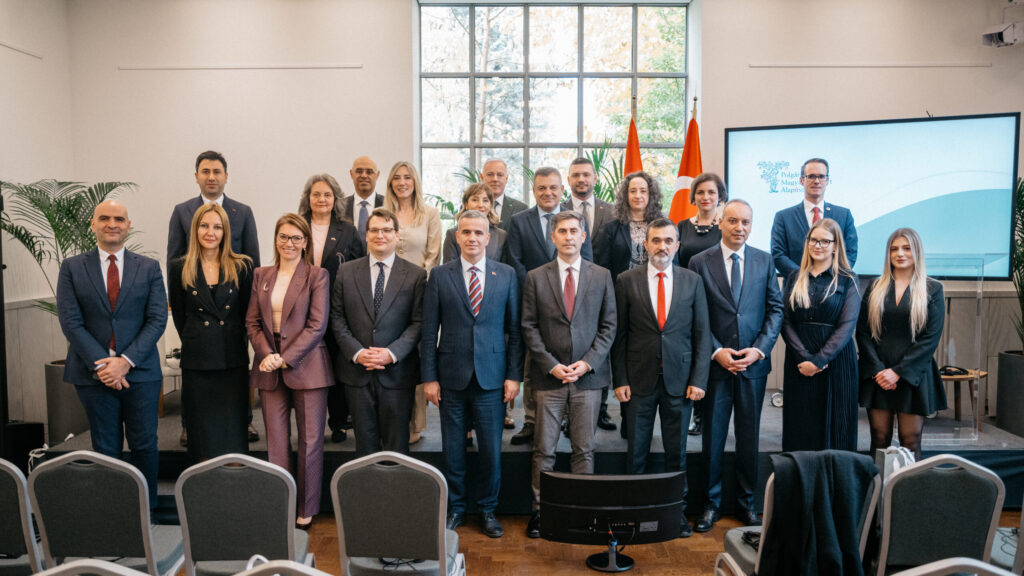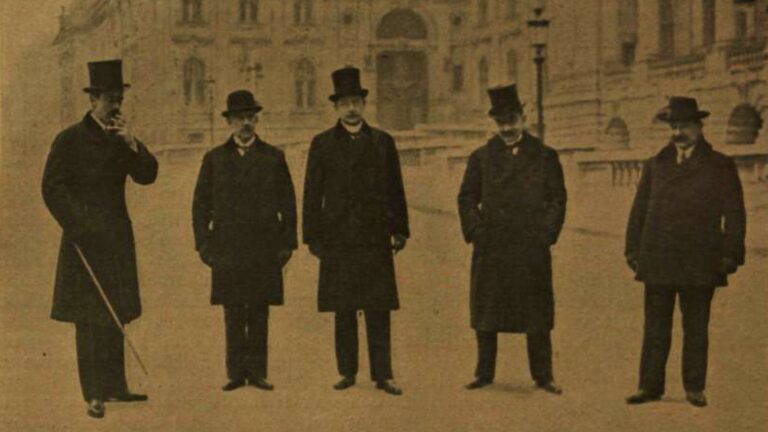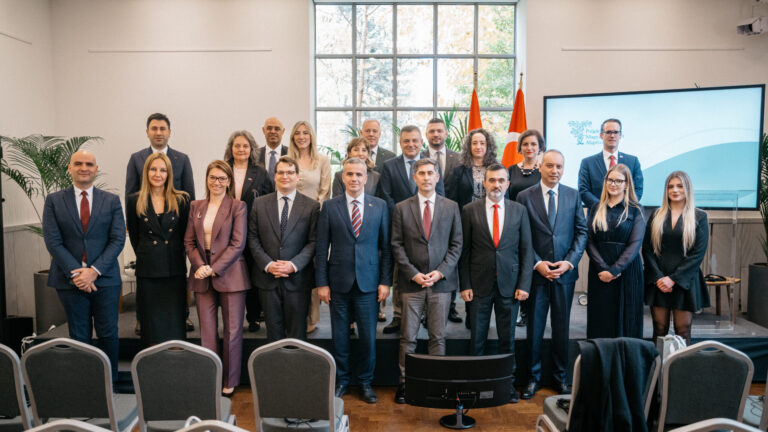In the realm of Hungarian contemporary sculpture, the artist collective BAGUDA represents a rare and noteworthy formation. Their latest exhibition, entitled ‘Perpill’, currently on view at the Einspach & Czapolai Fine Art Gallery in Budapest, places particular emphasis on the meeting point of communal creation and individual artistic vision. It approaches the classical traditions of sculpture with a spirit of experimentation and renewal.
An Obscure Village with a Symbolic Name
The name BAGUDA originates from an actual, albeit little-known, village in eastern India. Located in the Banapur Subdivision of Khordha district, in the state of Odisha, Baguda has a population of just 198—102 men and 96 women—and covers an area of approximately 1.66 square kilometres. Although it is almost invisible on the world map, this village serves a symbolic purpose for the group.
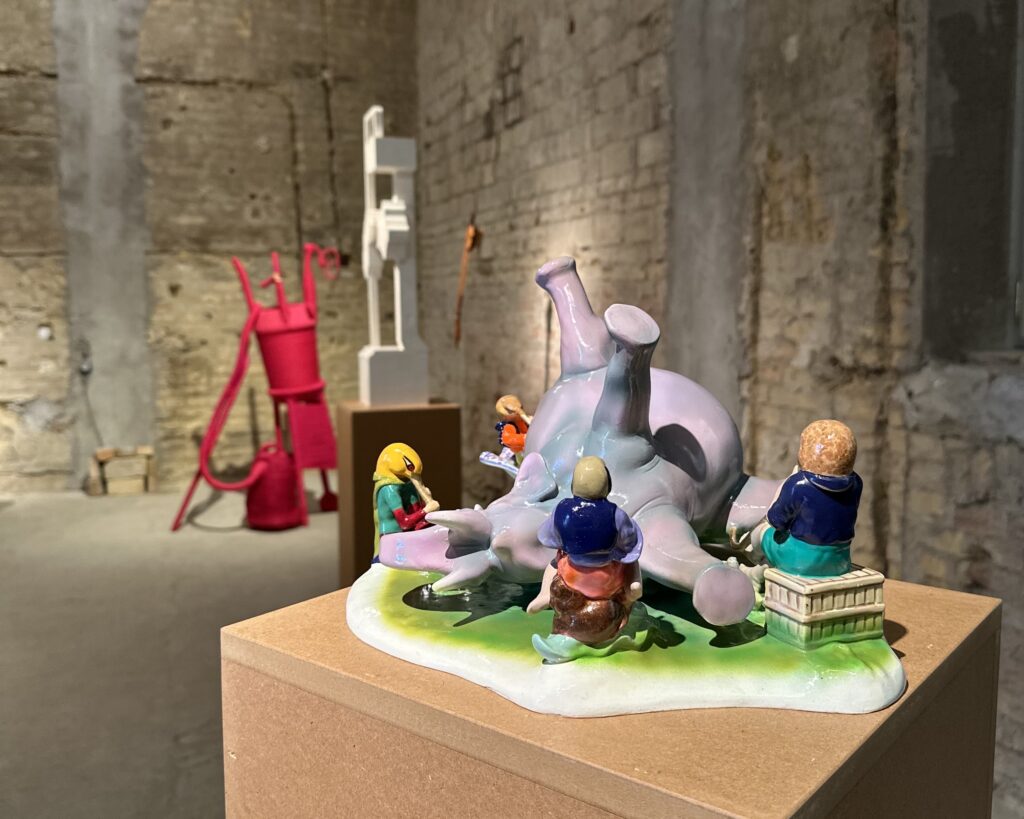
Founded in 2021, the BAGUDA collective comprises ten sculptors. Their exhibitions are not governed by fixed curatorial concepts but instead emerge from a dynamic and continuous artistic dialogue. Each artist contributes new works in response to contemporary issues, material experimentation, and formal exploration. Collaboration begins already in the planning stages through shared documentation and exchanges of ideas, and continues throughout the collective installation process. The focus is not on uniformity but on the productive tension between individual perspectives.
Tradition Reimagined
The members of BAGUDA are not united by a common style, but by a shared and critical engagement with the classical sculptural canon. Their works revisit traditional forms, techniques and references in a manner that reinterprets rather than imitates. Relief and volume, void and mass, translucency and density are all treated as elements bearing meaning, forming a sculptural language that is both contemporary and historically informed.
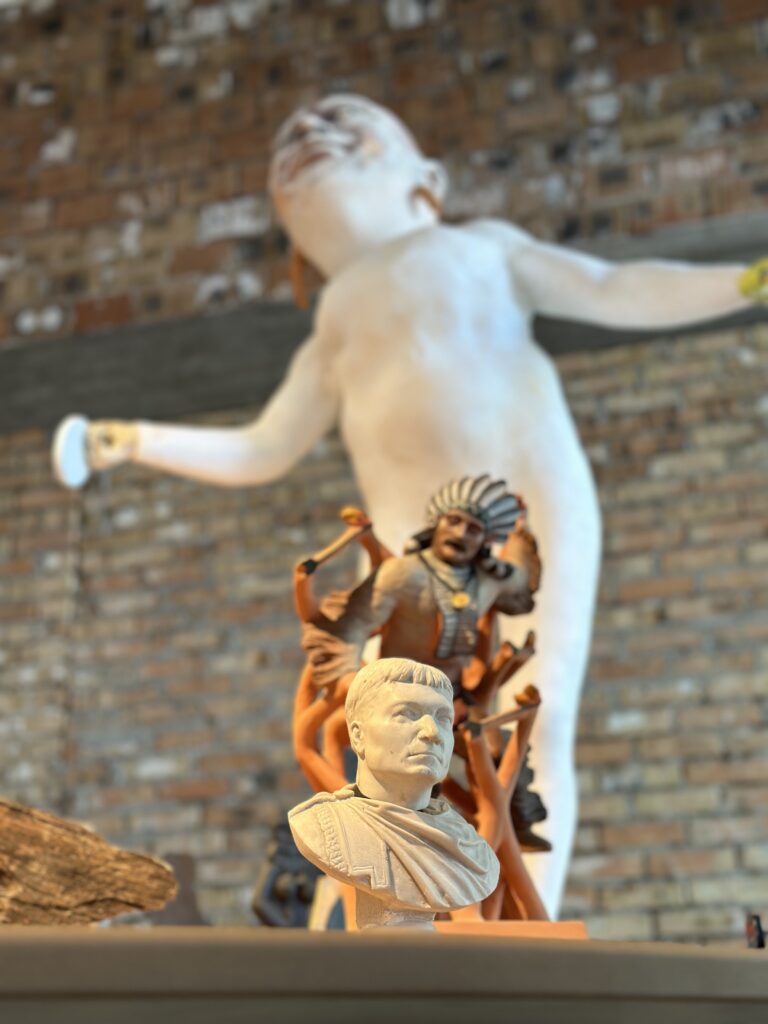
Two Spaces, Two Narratives and a Silent Storyteller
The exhibition is arranged across two separate gallery spaces. In the larger room, a monumental round table serves as a central platform where each artist has placed a single object. This shared surface makes visible the delicate equilibrium between individuality and collective presence. In the smaller room, wall-mounted and mid-sized sculptural works are displayed, with the spatial arrangement highlighting the performative aspects of sculpture, how the viewer moves among the objects and relates physically to the materials.
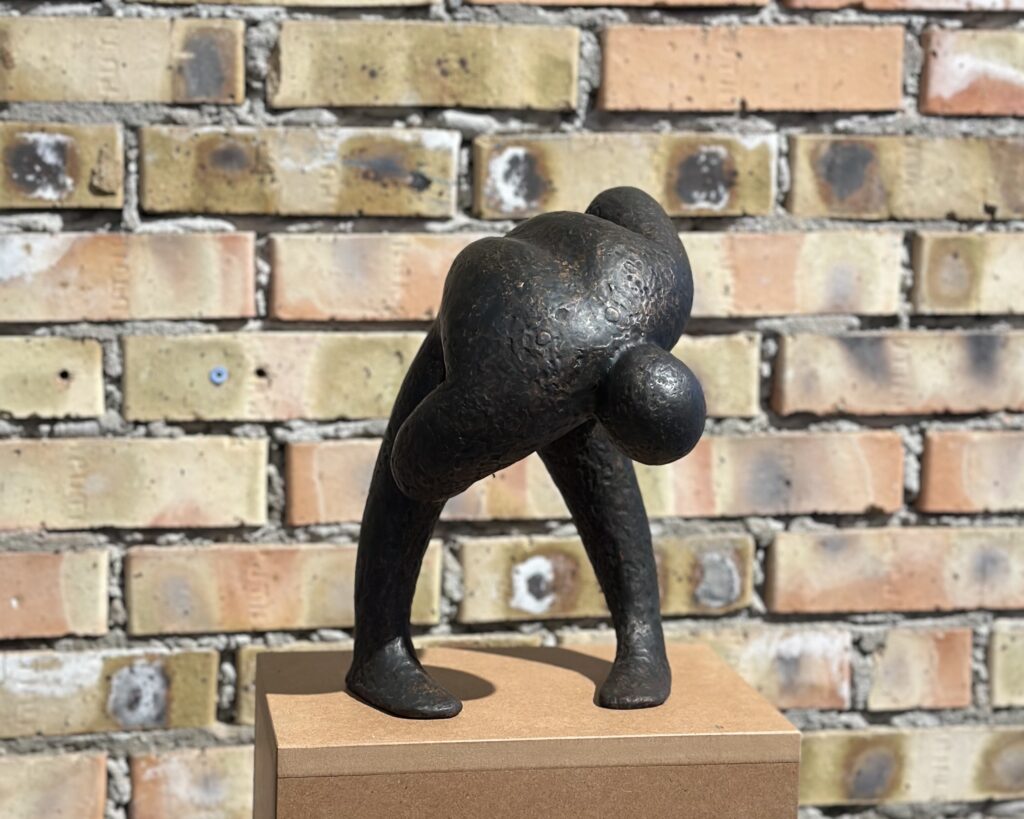
One particularly memorable piece presents a forward-leaning sculptural figure. It stands alone in the exhibition as the only work accompanied by a written text. The poem, entitled Heracles Thirteen and written by Merena Rudolf, gives voice to a mythical hero who has lost all memory. His consciousness stumbles across a bed of burning stones, haunted by fragmented expectations and disoriented identity. The recurring phrase ‘they say’ reflects both external demands and internal struggle, until all that remains is the ‘tiny bird of nothingness’, a fragile metaphor for what endures of the self. Together, sculpture and text form a poignant meditation on memory, responsibility and the search for meaning.
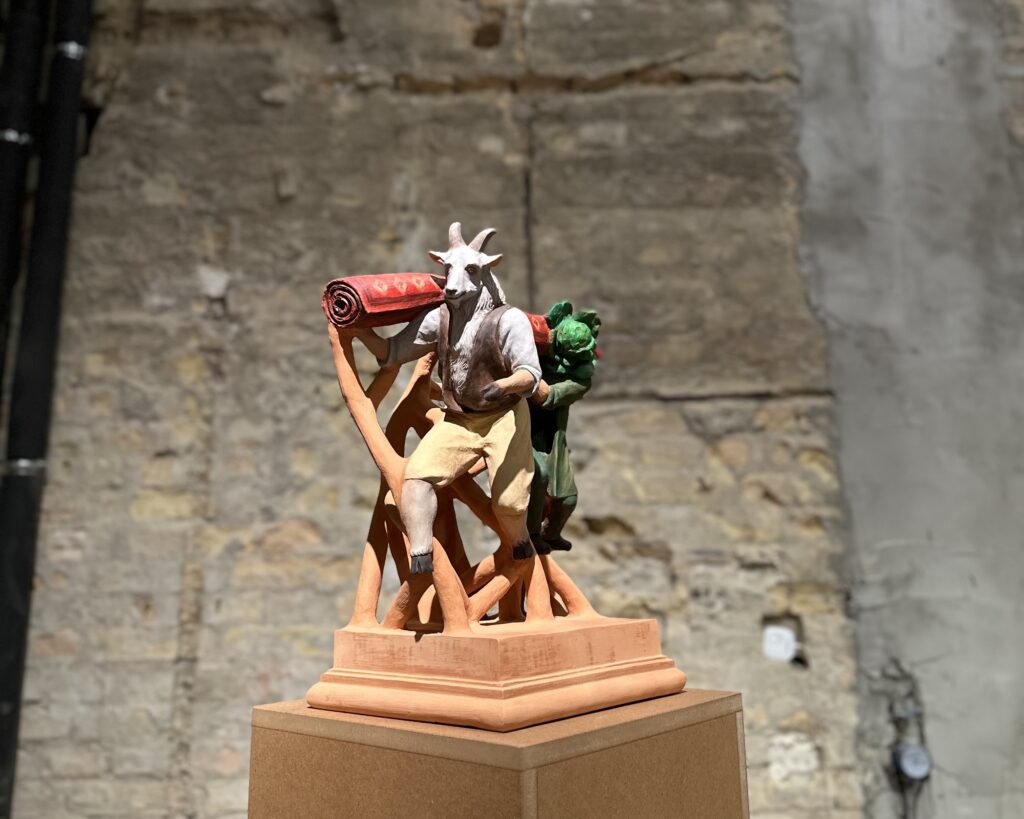
The Title ‘Perpill’: Wordplay and Self-Reflection
The exhibition’s title, ‘Perpill’, is a colloquial contraction of the Hungarian phrase per pillanat (‘at the moment’). It refers to the current concerns, materials and approaches that occupy the artists. At the same time, the abbreviation creates a tone of ironic detachment, as if it were the name of a product. This subtly calls attention to the ways in which contemporary artistic practice is entangled with broader cultural and market forces.‘Perpill’ is more than a collection of objects. It is an intellectual and visual experiment that connects the ideals of collective creation with a renewed interpretation of sculptural tradition. The BAGUDA group stands as an exemplary model of how individual artistic vision and communal discourse can strengthen, rather than undermine, one another. In doing so, they offer a compelling way forward, one that preserves classical values while engaging meaningfully with the present.
Related articles:




